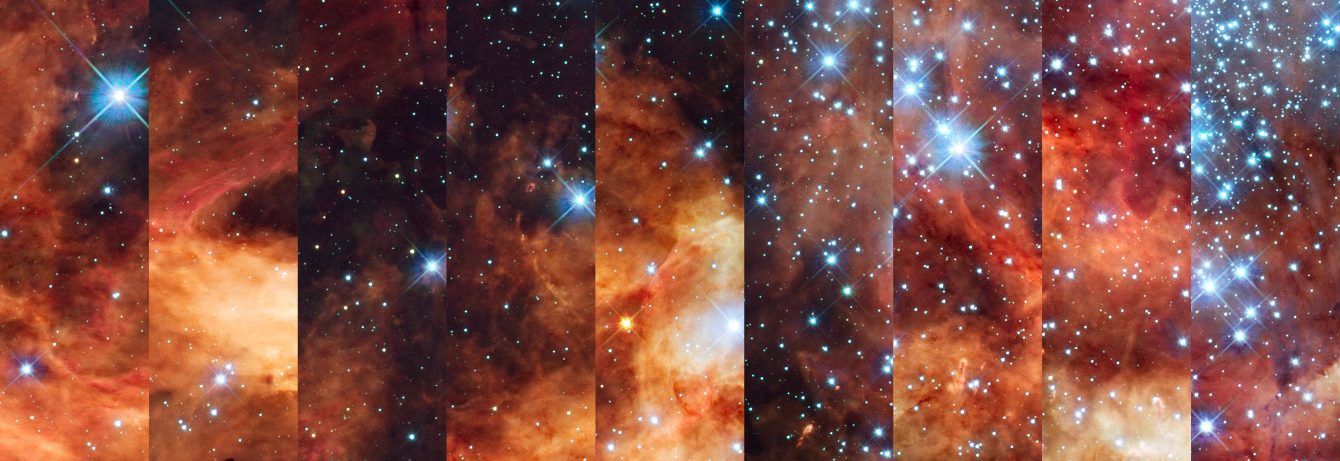Stellar Evolution Theory (SET)
Stars are the basic building blocks of the visible Universe and produce almost all chemical elements heavier than helium. Understanding how stars transformed the pristine Universe into the one we live in today is at the heart of research in astrophysics.
Massive stars are cosmic powerhouses — they can be several million times more luminous than the Sun, have strong stellar winds and explode in powerful supernovae. Thanks to this enormous feedback, massive stars helped to re-illuminate the Universe after the Cosmic Dark Ages, drive the evolution of galaxies, and lay the foundation for life as we know it.
At the end of their lifespan, massive stars leave behind some of the most exotic forms of matter: neutron stars and black holes. By observing these remnants, we can study matter under conditions that are unavailable on Earth. Mergers of neutron stars and black holes are now routinely observed thanks to gravitational wave observatories, thereby opening a new window onto the Universe.
Today, we know that most massive stars are born in binary and higher-order multiples — triples, quadruples, and so on. This has interesting consequences. As stars age, they grow and may eventually become giants with radii measuring up to ~1000 times that of our Sun. Stars in binaries can reach a stage where their outer layers are transferred onto their companion. In about 25% of massive stars, this mass-transfer phase is unstable and leads to a merger of both binary components. Mass exchange episodes and the more drastic merger events profoundly change the evolution of stars and their final fates. For example, if a star loses its envelope in a mass-transfer phase, it may explode in a supernova and produce a neutron star rather than collapsing into a black hole at the end of its life.
The Stellar-Evolution-Theory (SET) group investigates the turbulent and explosive lives of massive stars. Currently, the group focuses on massive binary stars and the intricate merging process. Mergers produce strong magnetic fields, and the merger products may forge highly-magnetised neutron stars in their terminal supernova explosions — these magnetic neutron stars, known as magnetars, are the strongest magnets in the Universe.

The SET group has received funding from the European Research Council (ERC) under the European Union’s Horizon 2020 research and innovation programme (Grant agreement No. 945806).
